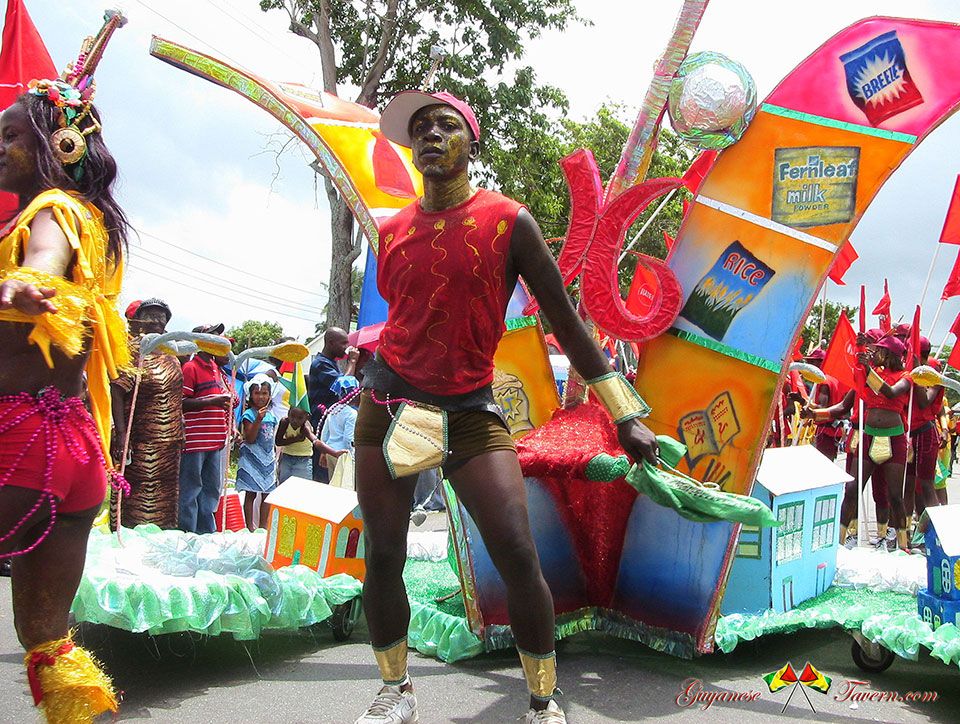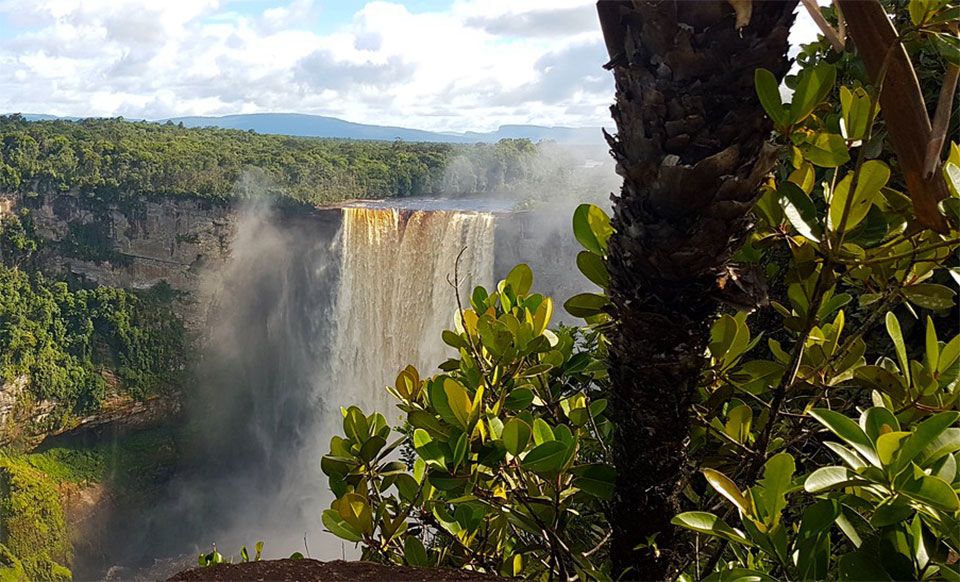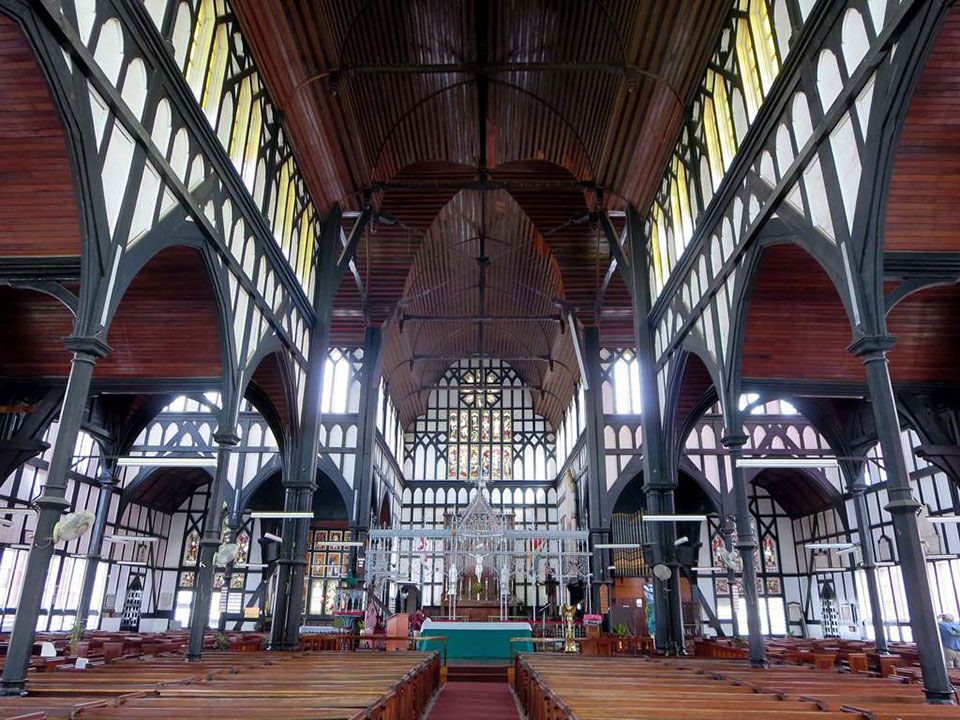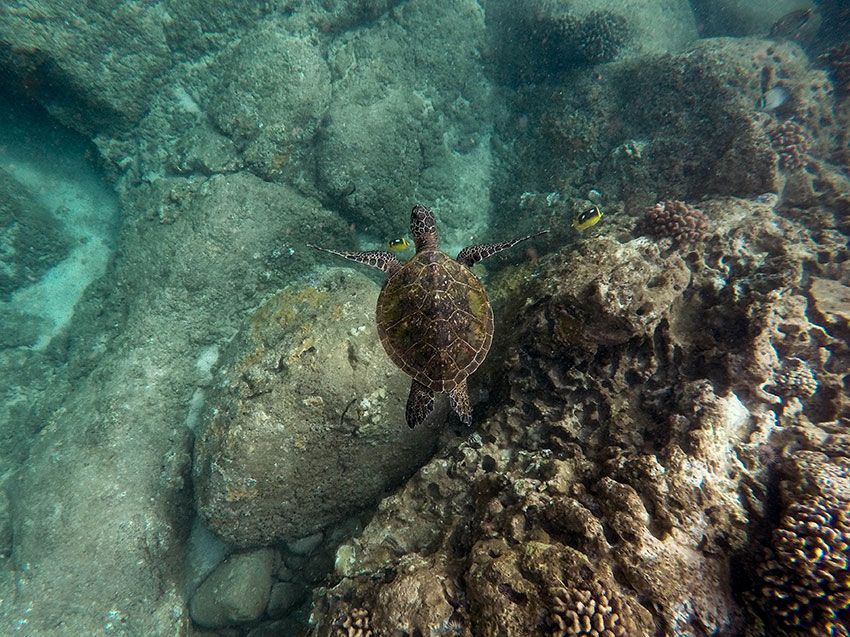Guyana, a country on South America’s North Atlantic coast, is defined by its dense rainforest. Its capital, Georgetown, is known for British colonial architecture, including tall, painted-timber St. George’s Anglican Cathedral.
It is home to a wide variety of landscapes and ecosystems – coastal plains in the north, mountains, rainforests, and dusty savannah plateaus in the southern Rupununi region.
With a population on just over 800,000 people, Guyana is one of South America’s smallest nations.

Photo credit: Tim Dennell / Flickr
It Has a Caribbean Vibe
This unique country combines the best of both South American and the Caribbean, added to the rich wildlife, waterfalls, great rum, cricket, and music. Its neighbors include Venezuela, Suriname, Brazil, French Guiana, Trinidad and Tobago, and Barbados, which also has left influence. It has many features in common with the Caribbean – from music to food, architecture, markets and more, however, Guyana doesn’t offer much of beaches.
English is official language
Guyana is South American’s only English-speaking country, so you won’t be having any problems speaking with the locals. The country has historically been tied to the English-speaking Caribbean as part of the British Empire. Guyana is a founding member of the Caricom (Caribbean Community) economic bloc and also the home of the Bloc’s Headquarters, the CARICOM Secretariat.
History
The Dutch were the first Europeans to establish colonies. In 1831 the three separate colonies became a single British colony known as British Guiana.
There are nine indigenous tribes residing in Guyana: the Wai Wai, Macushi, Patamona, Lokono, Kalina, Wapishana, Pemon, Akawaio and Warao. Guyana was granted self-governance in 1961 with full independence coming in 1966.
Culture
The country’s official language is English and the population is very diverse. The local residents of the country are generally very relaxing and fun people.
Guyana’s culture reflects Amerindian, Nepalese, Indian, Chinese, and African influences, as well as British, Dutch, Portuguese, and Spanish facets. Despite being in South America, Guyana is considered a Caribbean nation. All this has led to Guyana becoming a fascinating mixture of religion, culture, and cuisine.
Football and cricket are the main outdoor sports enjoyed by the locals. Some other sports that are enjoyed by the locals are table tennis, lawn tennis, netball, squash, boxing.

Unique Wildlife
Over 70% of Guyana remains undisturbed rainforest habitat for rare South American wildlife. Here you can find jaguars, giant otters, ocelots, giant anteaters, not to mention big snakes boa and anacondas, over 783 bird species like blue-and-yellow and red-and-green macaws, toucans.
The Guyanese government works closely with several international conservation organizations like Conservation International, World Wildlife Fundto preserve wildlife and control and implement best practices in sustainable wildlife tourism.

Photo credit: King sheik / Wikipedia
Visit Some of the Many Festivals!
Guyanese people enjoy lots of festivals throughout the year. Religious holidays like Christmas and Easter are widely celebrated. You can see Christmas trees and a Christmas cake with rum. Schools are closed for two weeks during Easter and children work with their parents and friends to prepare for a unique Guyanese Easter tradition
Mashramani, often abbreviated to “Mash”, is an annual festival that celebrates Guyana becoming a Republic in 1970. The streets are flooded with people to view a big parade with extravagantly dressed people in colorful costumes dancing under Caribbean rhythms.
Hindu and Muslim festivals – Paghwa or also called Holi in other countries. Holi is originally a Hindu celebration that was brought over to Guyana from India in the early 1800s. The festival marks the beginning of spring. and Eid-ul-Fitr marking the end of Ramadan are also celebrated.
Divali – also called the festival of lights. This is one of the most picturesque festivals in Guyana. All households and city streets are decorated with lit-up candles.
Independence Day. Guyana was ruled by the British until May 26th, 1966, when the country became independent. A flag-raising ceremony, fireworks and a message from the president, as well as two-day Guyana Food, Arts and Music festivals held at the National Stadium are some of the events following the celebrating of this momentous day.

Photo credit: Jeremy Weate / Flickr
Land of Many Waters
There are lots of waterfalls, but the best known is Kaieteur Falls, Guyana’s tallest Falls, with 226 meters. It is five times higher than Niagara and even higher than Victoria Falls and it is a result of the Potaro River interacting with a sandstone cliff into the verdant.
There are three large rivers that gives the names of Guyana’s three counties – the Demerara, Essequibo and Berbice River.

Photo credit: Jeremy Weate / Flickr
Explore the rainforest
Everyone interested in nature and ecotourism will enjoy Guyana. 80% of the country is covered in rainforest, most of which is still unexplored and more likely to reveal species yet unknown to science.
90% of Guyana’s population lives on the coast.
The Iwokrama Forest is nearly 3,710 square kilometers of central Guyana. The Iwokrama Forest’s ecosystem is located at the juncture of Amazonian and Guianan flora and fauna. It has the highest species richness for fish and bats for any area this size in the world and contains high species richness and several species of animals that are threatened or extinct across the globe.
In 2012, Guyana received a $45 million reward from Norway for its rainforest protection efforts.
 Photo credit: David Stanley / Flickr
Photo credit: David Stanley / Flickr
The Capital Georgetown
Georgetown is the capital of Guyana and the country’s largest urban center. It is situated on the Atlantic Ocean coast at the mouth of the Demerara River and it was nicknamed the ‘Garden City of the Caribbean.’
The city is surrounded by a blanket of cane fields along with marshy swamps, and savannah lands on its east and south. It’s a perfect mixture of South American and Caribbean influences.
The Home of El Dorado
The legend of El Dorado is popular folklore and is applied to a legendary story for the lost city of gold, in which precious stones were found in fabulous abundance along with gold coins.
In 1595, it was rumored that El Dorado could be found at Lake Parime in the highlands of Guyana.
Feature photo credit: Sorenriise / Wikipedia
Want to learn more about other sustainable destination? Check out section sustainable travel destinations.











